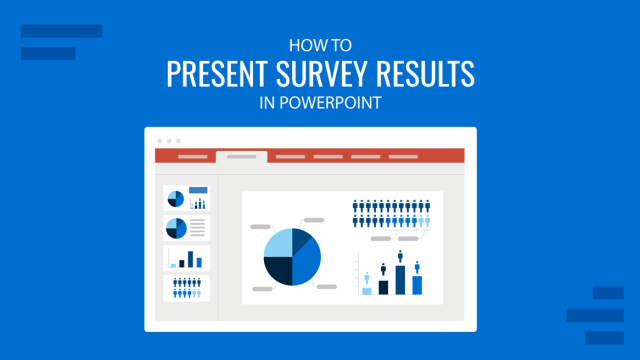
What is the Likert Scale?
Rensis Likert, a Psychologist, concluded in 1932 that he needed a mechanism to assess the intensity of people’s emotions. He created a linear scale for psychometrics—the measurement of people’s attitudes, values, internal feelings, and judgments about their own or others’ behavior in research and therapeutic practice.
The concept involved individuals using a scale to express their feelings about something. People must respond to his scale by indicating how they feel about or agree with each statement.
Many educational researchers, marketers and strategists have used this unidirectional Likert’s scale as an analytical scale to assess their views towards the target market, brand or product.
Types of Likert scale
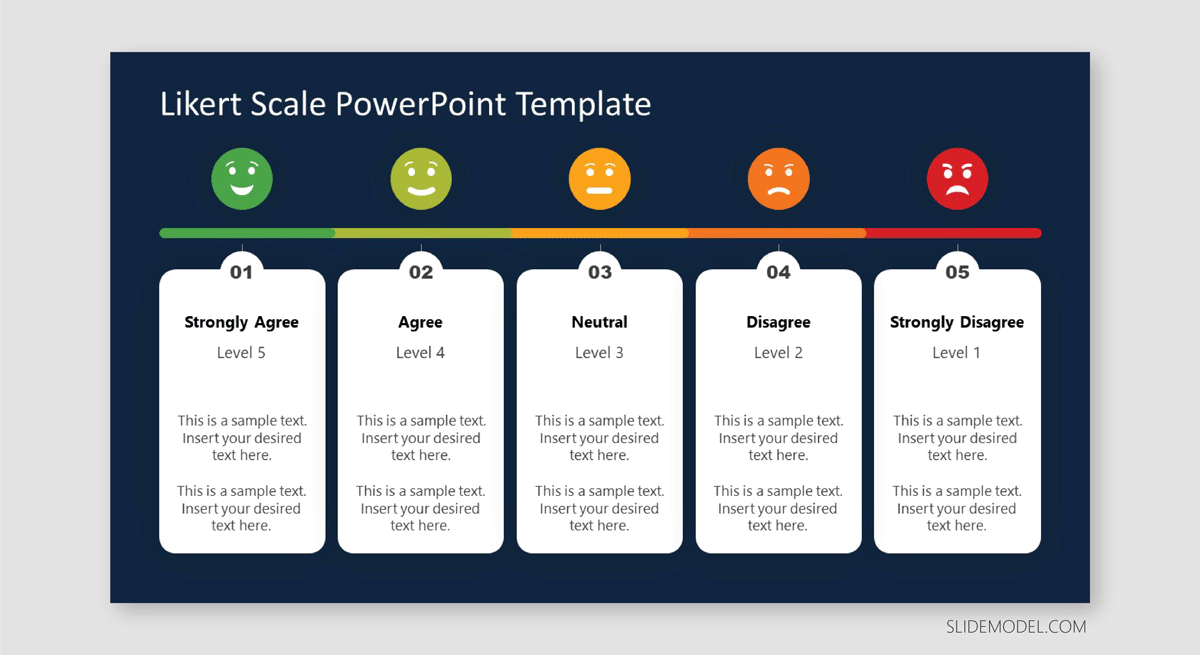
Since its invention, the Likert scale has had diverse constructional variations.
When the neutrality lies exactly midway between two extremes (for example, strongly agree and strongly disagree), it is known as the Symmetric scale. Such a scale gives the individual the independence to choose a balanced or symmetric response.
When the choices on one side of the neutrality are not the same as on the other side, it is known as the Asymmetric scale. In such a case, the individual is left with no neutrality or preference.
A scale must accurately and consistently represent the measured judgment, attitude, or value in order to create reliable and meaningful data. A 5 point Likert scale and 7 Point Likert scale offer their respondents 5 and 7 options to choose from, respectively.
You may find that the Likert scale can be odd or even. An odd scale gives a fair idea of the customers’ response compared to an even scale. Apart from the regular 5 and 7 point scale, the other variations of the Likert scale include 2 Point Likert scale, 3 Point Likert scale, 4 Point Likert scale, 6 Point Likert scale, 9 Point Likert scale and 10 Point Likert scale.
7 Point or 5 Point Likert Scale: Which is better?
Dan Kelly, from The Negotiator Guru, said:
“My suggestion is to use a 5-point scale when you have more than 100 respondents and a 7-point scale for smaller studies (N<100) when you need a better data distribution.”
Suppose you’re trying to gauge a complicated operation or service, such as customer engagement or retail experience. In that case, you’ll probably benefit from including as many options for people to voice their thoughts as feasible. The more emotional levels you share, the more diverse the responses you will receive. One of the studies proves that the reliability increases by increasing the number of responses.
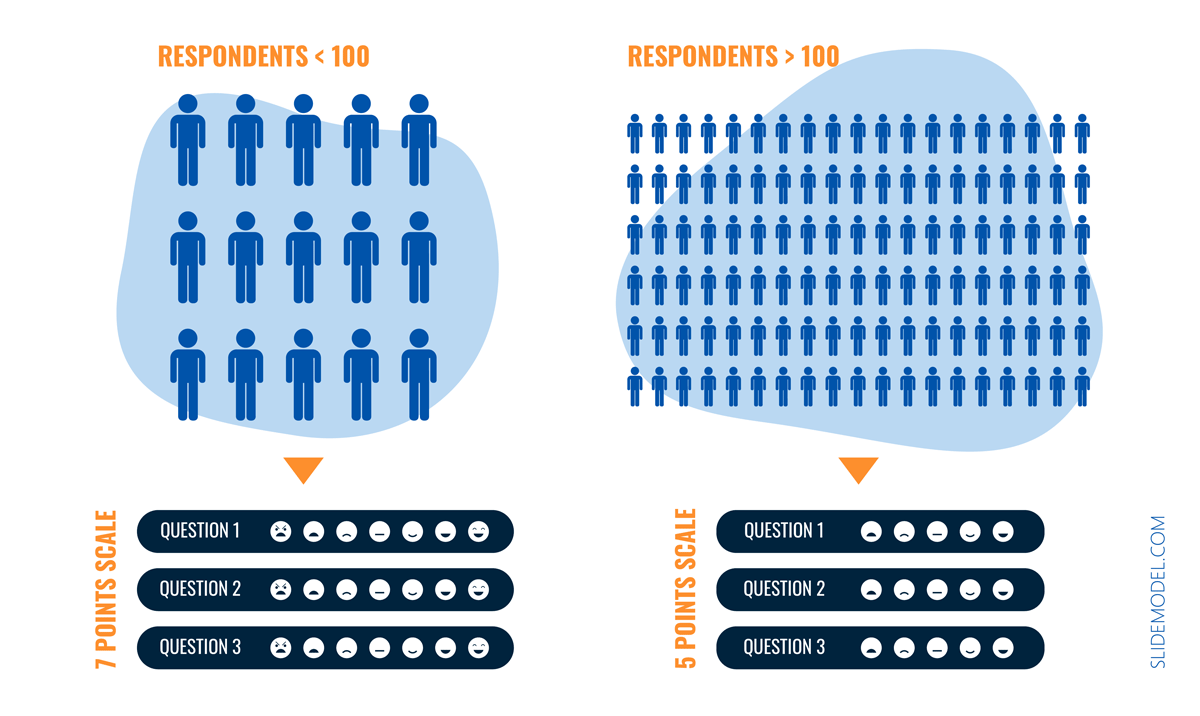
The 5 Point Likert scale offers five values with two extremes and one neutral choice. The most negative response is considered null. This scale is called the unipolar scale, wherein response ranges from none to maximum.
The 7 Point Likert scale provides more precision and represents the best sentiment of the respondent. It is referred to as a bipolar scale wherein the answer lies on either side of the neutrality. It provides extra data points for statistical analysis and hence is more beneficial to the researchers.
Tips to Create a Likert Scale questionnaire
- Frame specific questions: Asking multiple questions instead of one specific question can widen the horizon of factors contributing to the response.
- Use unipolar scales: A unipolar scale offers options from none to a maximum which is easier to comprehend and hence causes no confusion.
- Label the responses: Labeling responses will make the survey readable with unbiased answers.
- Keep it concise: The best survey questions are precise and to the point. Avoid Likert scale questions that may persuade respondents to answer specifically to increase Likert scale validity and reliability.
Why use a Likert Scale?
The Likert scale formula is used to understand your customer’s experience and satisfaction with your products, services, and business. Here are some advantages and disadvantages of using Likert scale.
Likert Scale is often applied in various survey types, including customer feedback and satisfaction surveys. One well-known application that parallels the goal of the Likert scale is the Net Promoter Score (NPS), a customer experience metric used to measure customer loyalty and satisfaction.
NPS asks a single question: “How likely are you to recommend our product/service to a friend or colleague?” with respondents choosing a rating on a scale from 0 to 10. While NPS provides a direct measure of loyalty, incorporating follow-up questions with a Likert Scale approach can yield deeper insights. For instance, you could follow up an NPS question with a Likert-scale query such as, “To what extent do you agree with the statement: ‘Our product meets my expectations’?” This combination enables businesses to gather both quantitative NPS data and qualitative feedback that can be analyzed more precisely.
Integrating NPS with Likert Scale questions enriches survey responses by offering a more detailed understanding of customer sentiment and potential areas for improvement.
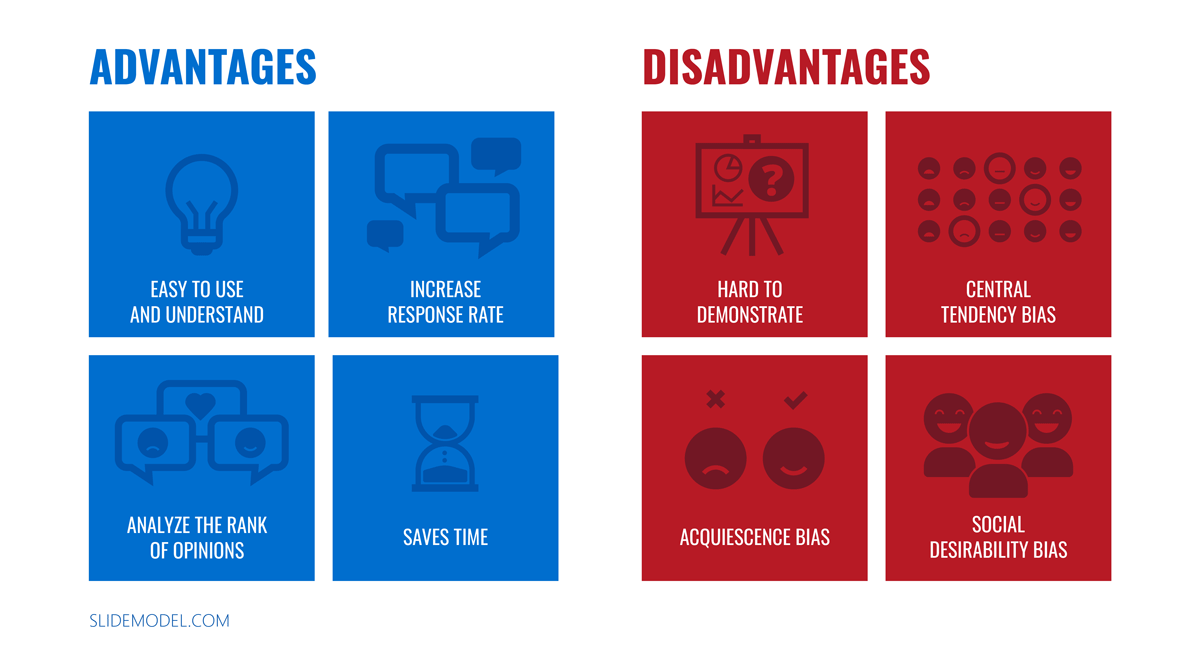
Advantages
- Easy to use and understand: Likert scale is easy to use and likely to yield a highly reliable scale. Besides, it is very comprehensive for the participants.
- Increased response rate: The Likert scale enables the respondents to respond quickly with plenty of choices.
- Analyze the rank of opinions: It offers the audience a varied view about a specific topic in ranking.
- Saves time: A tailor-made Likert scale survey provides the options to the customer to take the survey, hence saving their time as well as your time for analysis.
Disadvantages
- It is hard to demonstrate: It can be difficult to present complex data using the Likert scale, leading to a lack of reproducibility.
- Central tendency bias: Respondents may choose neutral options and avoid extreme response categories later.
- Acquiescence bias: Participants may mark every question as satisfied to avoid negative answers.
- Social desirability bias: Participants tend to produce a false reading to present themselves in a more socially acceptable way.
Performing a Likert Scale Analysis (with examples)
When analyzing the data on the Likert scale, researchers and statisticians follow two different schools of thought. One group considers the Likert scale an ordinal scale and debates that responses are arranged in some ranking order. The other school differs by stating that when the researcher combines all the items, the scale’s components are adequately interconnected and that the grouped items accurately reflect the underlying variable.
However, as there is no relation in relative magnitude and distance between two responses quantitatively, it can’t be known as an interval scale.
Likert scale finds its use vividly in various sectors, including marketing, educational, market research, medical research, etc. The examples include both descriptive surveys and questionnaires. Some of the Likert scale examples include:
- A marketing firm may request its customer fill the survey with a question: “Please describe your satisfaction level after using our products,” with answers ranging from very dissatisfied to very satisfied on 5 Point scale.
- In an earlier Today’s Speech article, the writers suggested measuring speakers’ credibility by asking the following question: “The format of this journal is not attractive.” followed by answers ranging from strongly agree to strongly disagree on 5 Point scale.
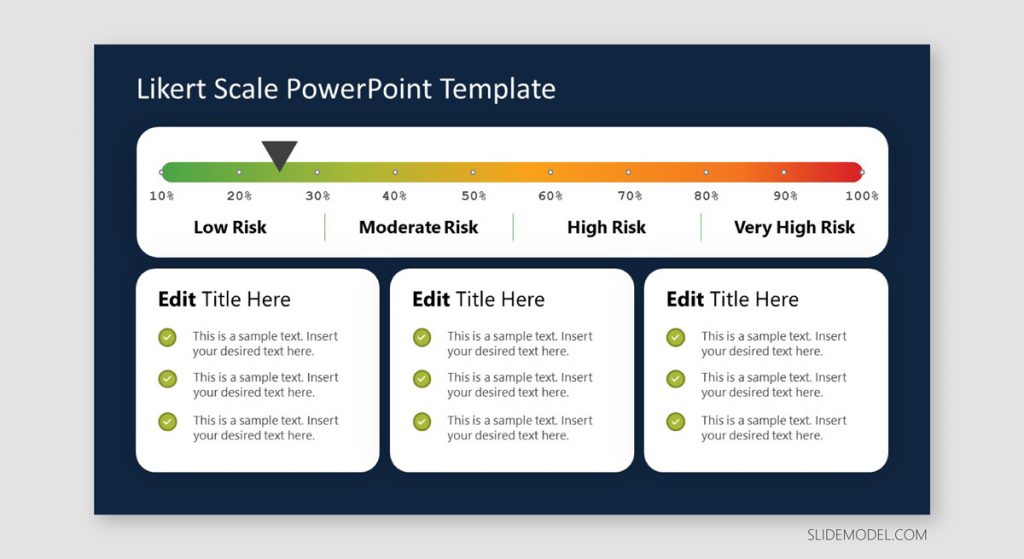
Curate Likert scale questions that are robust and responsive with countless survey samples and templates. You can check out this space for more information on using effective Likert scale templates.
Summary
Peter Druker said: “what gets measured, gets managed.” With a Likert scale template, make it easy for your organization to comprehend and measure the opinion or attitude of your audience towards your specific market or product.
